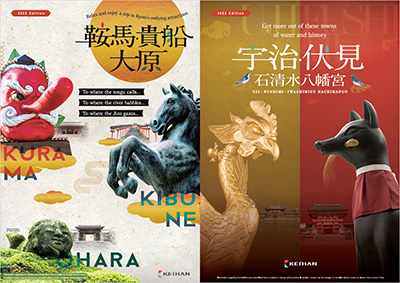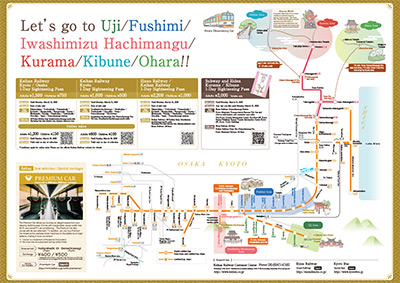Relax and enjoy a trip to Kyoto's outlying attractions
Kurama / Kibune / Ohara
Kurama area
-
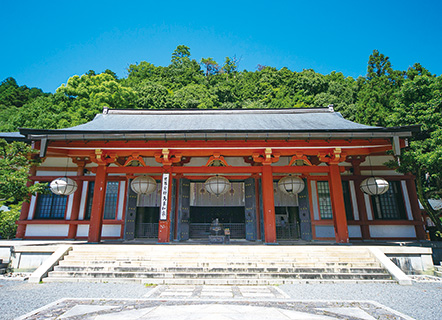
1Kurama-dera Temple
Gancho, the leading disciple of St. Ganjin (Ch. Jianzhen), founded this temple in 770, installing a statue of Bishamonten. It is the head temple of all Kurama Buddhism temples. The Reiho Hall exhibits a number of the temple's treasures, such as a statue of Bishamonten that is registered as a National Treasure. As a young man, Minamoto-no-Yoshitsune is said to have trained here with the tengu goblins. There is a site associated with him on the mountain path leading from behind the Main Hall to the Inner Sanctum.
- Open:
- 9:00-16:15 *Reiho Hall shuts at 16:00. Closed on Tuesdays (following day if Monday is a holiday), and between December 12 and the end of February.
- Entry:
- 16 and up: ¥500 *Reiho Hall requires a separate charge of ¥200.
- Address:
- 1074 Kurama Hon-machi, Sakyo-ku, Kyoto City, Kyoto Prefecture
- Phone:
- 075-741-2003
- Getting there:
- Just to the north of Eizan Railway Kurama Sta. (Nio Gate). 30 min. walk to the Main Hall. Or 10 min. walk from Cable Tahoto Sta.
-
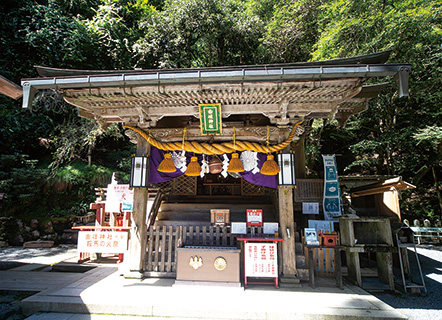
2Yuki-jinja Shrine
This shrine was once venerated within the Kyoto Imperial Palace as the guardian deity of the imperial family. On its grounds are the Great Sugi, a sacred cryptomeria tree about 800 years old, as well as koma-inu depicted holding babies. The deity here is worshiped as the guardian of conception and safe birth.
- Entry:
- Free (Entry required for Kurama-dera Temple)
- Address:
- 1073 Kurama Hon-machi, Sakyo-ku, Kyoto City, Kyoto Prefecture
- Phone:
- 075-741-1670
- Getting there:
- 10 min. walk north from Eizan Railway Kurama Sta.
Gallery
-
The huge tengu
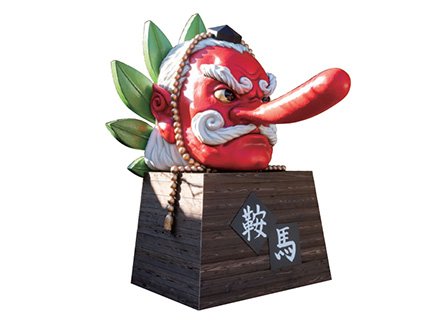
The huge tengu that greets visitors outside Kurama Station. It is 4 meters tall, and the face alone is 1.8 meters -
Kurama Station
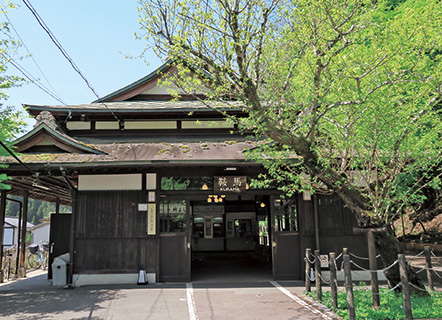
Kurama Station is the terminus for the Eizan Railway Kurama Line. The Kirara Observatory Car, with its huge glass windows, goes here as well -
The Kinone Michi
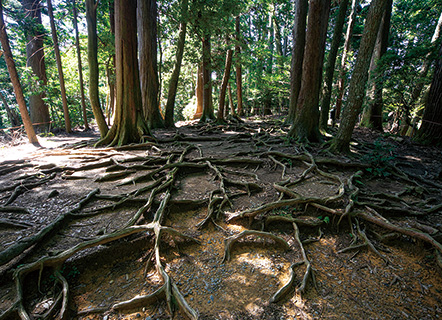
The mountain path with the exposed roots that heads up from the Kondo Hall to the Inner Sanctum of the Kurama-dera Temple is called the “Kinone Michi” (Tree Root Path). Believed to be where Yoshitsune underwent religious training, the path between Kurama-dera Temple and Kibune can be walked in about two hours -
The Nio Gate ...1
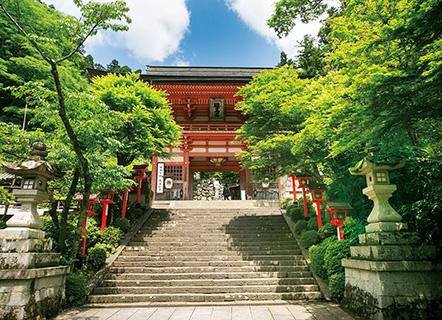
Trees grow beside the stone steps leading to the Nio Gate, and in spring and summer the new leaves are brilliant, while in autumn they are dipped in scarlet -
Spiritual Spot in front of Kondo Main Hall ...1
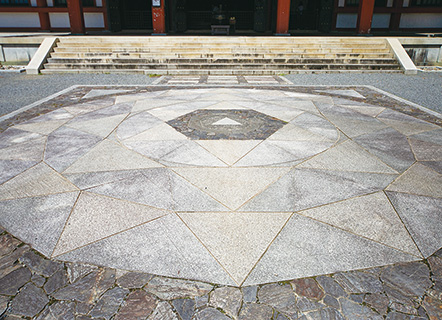
The Kongo Floor in front of the Main Hall Kondo is popular with people who believe it is a “power spot” where the energy of the universe can be sensed -
View from Kondo Main Hall ...1
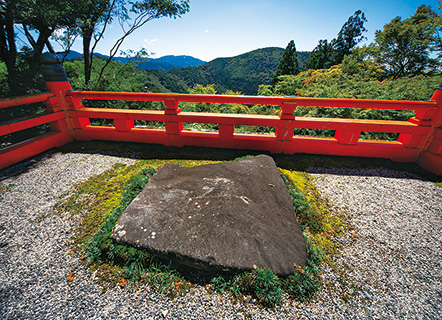
The area in front of the Kondo is the best place to get great views out to Mt. Hiei, and enjoy the different landscapes in each season -
Tengu Fortune ...2
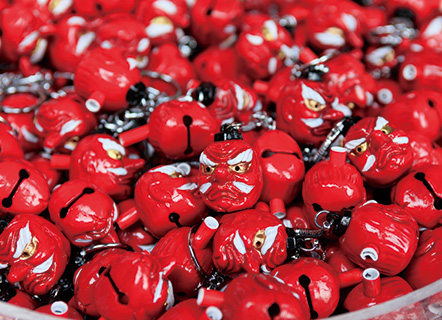
“Tengu Fortune” with a fortune inside a tengu- shaped key holder: ¥500 -
Great Sugi Wishing Charm ...2
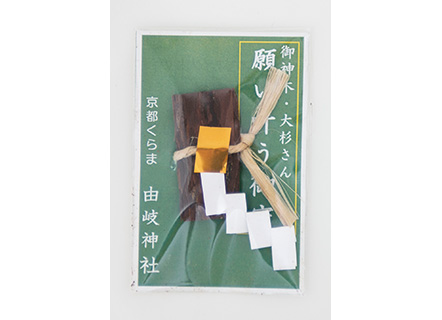
“Great Sugi Wishing Charm” that will grant all sorts of wishes: ¥1,000
Kibune area
-
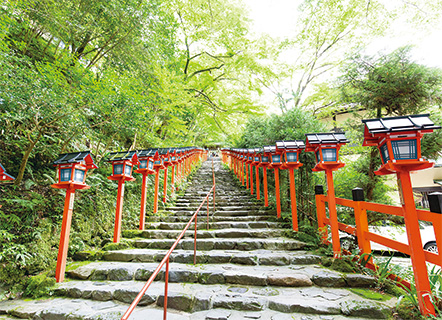
1Kifune-jinja Shrine
An ancient shrine along the Kibune River, the source of the Kamo River, it enshrines the god of controlling the waters. The poet Izumi Shikibu came here to pray in the Heian period (794-1185), and once more regained the love of her husband. Ever since, it has been popular as a shrine for matchmaking. Worshipers can gain benefits that include conception and other relationships.
- Open:
- 9:00-17:00 (goods shop)
- Address:
- 180 Kurama Kibune-cho, Sakyo-ku, Kyoto City, Kyoto Prefecture
- Phone:
- 075-741-2016
- Getting there:
- 30 min. walk north from Eizan Railway Kibuneguchi Sta. or 5 min. walk north from Kibune bus stop
- URL:
- https://kifunejinja.jp/en/
Gallery
-
Kawadoko Riverside Dining ...1
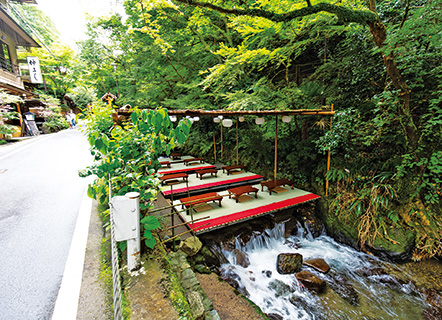
Around May every year, decks are put out over the Kibune River by local inns and restaurants. This becomes a popular place to gather to enjoy the coolness until autumn -
Kifune-jinja Shrine ...1
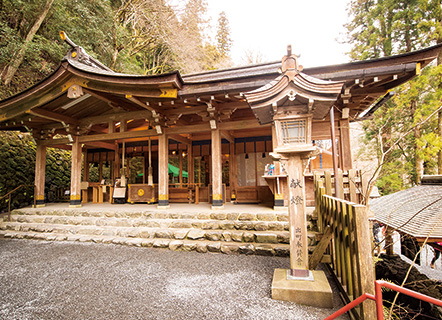
The deity worshiped at the main shrine is a water god called Takaokami-no-Kami. A sacred spring bubbles up in front of the shrine building -
Kifune-jinja Shrine Ema Wooden Plaques ...1
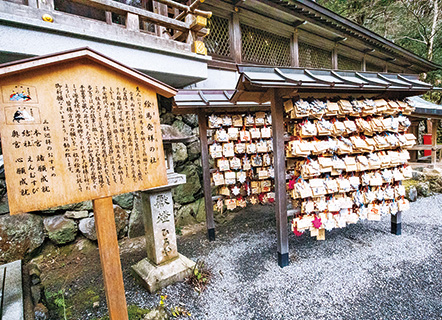
Kifune-jinja Shrine is where ema (votive tablets) were first used. Many, many ema have been offered here -
Mizu-ura Fortune ...1
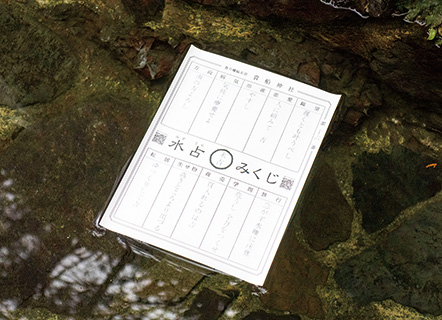
“Mizu-ura Fortune” where characters float up on the water surface: ¥200
Ohara area
-
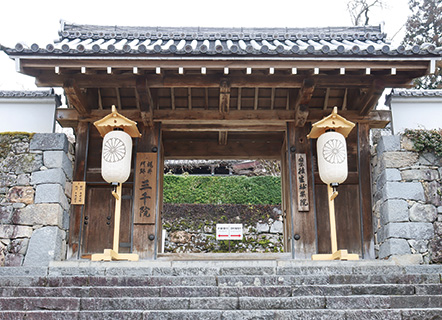
1Sanzen-in Temple
One of the Five Tendai Monzeki temples, or temples whose head priests used to be members of the imperial family, it is home to National Treasure Buddhist statues and beautiful gardens. The grounds include the Guest Hall with its shoin room, the Amida Hall which houses a statue of Amida flanked by retainers, the Shinden or Main Hall where rituals are carried out, and other dignified buildings, as well as two beautiful gardens, the Yusei-en and the Shoheki-en, attracting many visitors. The leaves are spectacular in autumn, and the temple looks wonderful in all seasons.
- Open:
- 9:00-17:00 *8:30-17:00 in November, 9:00-16:30 in December through February
- Entry:
- ¥700 (ages 13-18: ¥400; ages 6-12: ¥150)
- Address:
- 540 Ohararaikoin-cho, Sakyo-ku, Kyoto City, Kyoto Prefecture
- Phone:
- 075-744-2531
- Getting there:
- 10 min. walk east from Ohara bus stop after taking the bus from Demachiyanagi Sta. or Eizan Railway Yase-Hieizanguchi Sta.
- URL:
- http://www.sanzenin.or.jp/en/
-
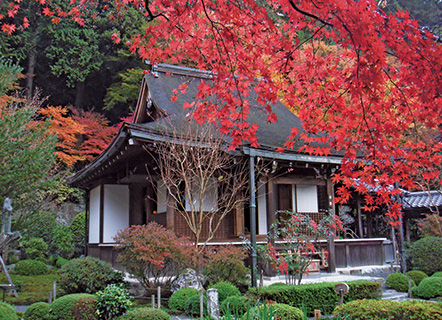
2Jakko-in Temple
This is a Tendai-sect nunnery that is said to have been founded to pray for the spirit of Emperor Yomei, Prince Shotoku's father, in 594. After the House of Taira collapsed, Taira-no-Kiyomori's daughter, Kenreimon-in, lived in seclusion here. The temple also appears in the Ohara Goko section concluding the Tale of the Heike.
- Open:
- 9:00-17:00 *Until 16:30 in December through February, 10:00-16:00 on January 1-3
- Entry:
- ¥600 (ages 13-18: ¥350; ages 6-12: ¥100)
- Address:
- 676 Oharakusao-cho, Sakyo-ku, Kyoto City, Kyoto Prefecture
- Phone:
- 075-744-3341
- Getting there:
- 15 min. walk northwest from Ohara bus stop after taking the bus from Demachiyanagi Sta. or Eizan Railway Yase-Hieizanguchi Sta.
- URL:
- https://www.jakkoin.jp/en/
-
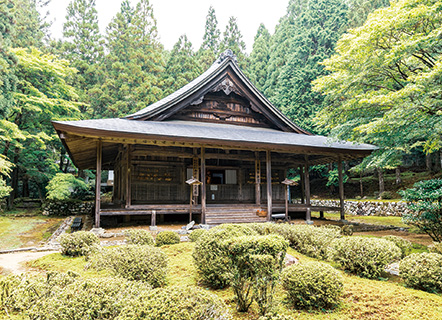
3Raigo-in Temple
The priest Ennin founded it in the early 850s to serve as a place to practice shomyo, Buddhist chanting musical temperament. It was re-established in 1109, and the Main Hall houses three seated statues of Yakushi, Amida, and Shaka dating from the Heian Period (794-1185). The current Main Hall dates to 1533.
- Open:
- 9:00-17:00
- Entry:
- ¥400 (ages 13-18: ¥300)
- Address:
- 537 Ohararaikoin-cho, Sakyo-ku, Kyoto City, Kyoto Prefecture
- Phone:
- 075-744-2161
- Getting there:
- 15 min. walk southeast from Ohara bus stop after taking the bus from Demachiyanagi Sta. or Eizan Railway Yase-Hieizanguchi Sta.
Gallery
-
Sanzen-in Temple ...1
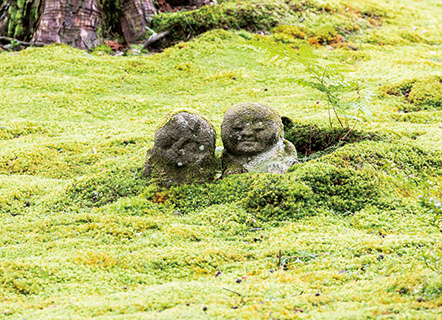
(They were sculpted by Takashi Sugimura)
Small Warabe Jizo statues, covered in moss, are dotted throughout the Yusei-en. There are several by the Benten Lake, soothing the souls of parishioners -
Sanzen-in Temple ...1
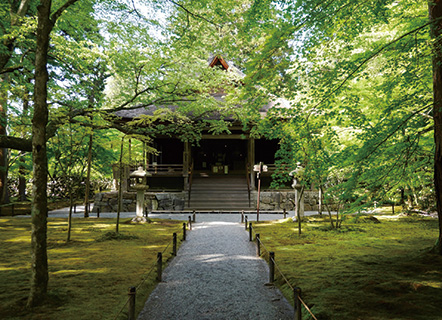
The Amida Hall, registered as an Important Cultural Property, is noted for its ceiling, which looks like the hull of a boat. The Hall houses a huge seated statue of Amida as well as Kannon and Seishi -
Sanzen-in Temple ...1
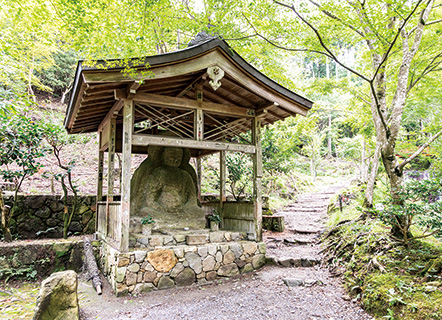
This huge stone statue of Amida in the grounds dates from the Kamakura period (1185–1333). About 2.25 m in height, it is considered a precious relic that tells of the Jodo faith back in its day -
Jakko-in Temple ...2
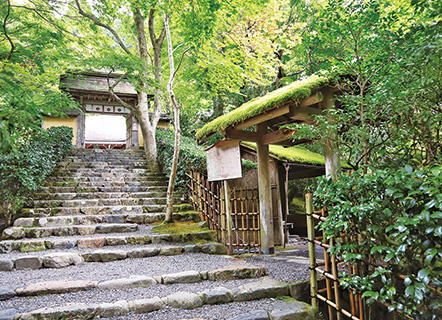
The approach road to the Main Gate is beautiful in summer with green maples -
Jakko-in Temple ...2
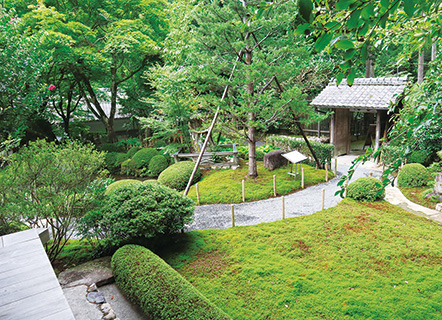
The garden is also famous, featuring the Snow-Viewing Lantern donated by Toyotomi Hideyoshi from Fushimi Castle when the Main Hall was rebuilt then, and the Migiwa Pond -
Raigo-in Temple ...3
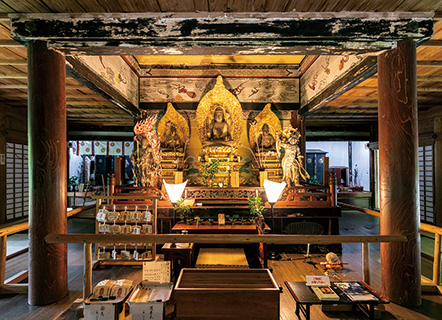
All three seated statues are Important Cultural Properties -
Soundless Waterfall
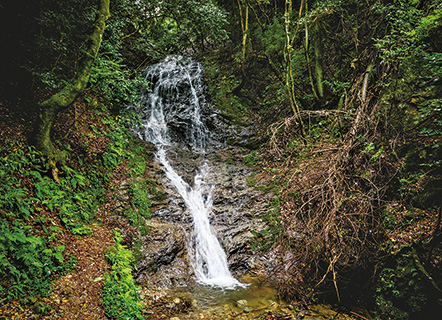
The “Otonashi-no-Taki” or “Soundless Waterfall” upstream along the Ritsu River, right beside the temple, is known for its different appearances in each of the four seasons
Map
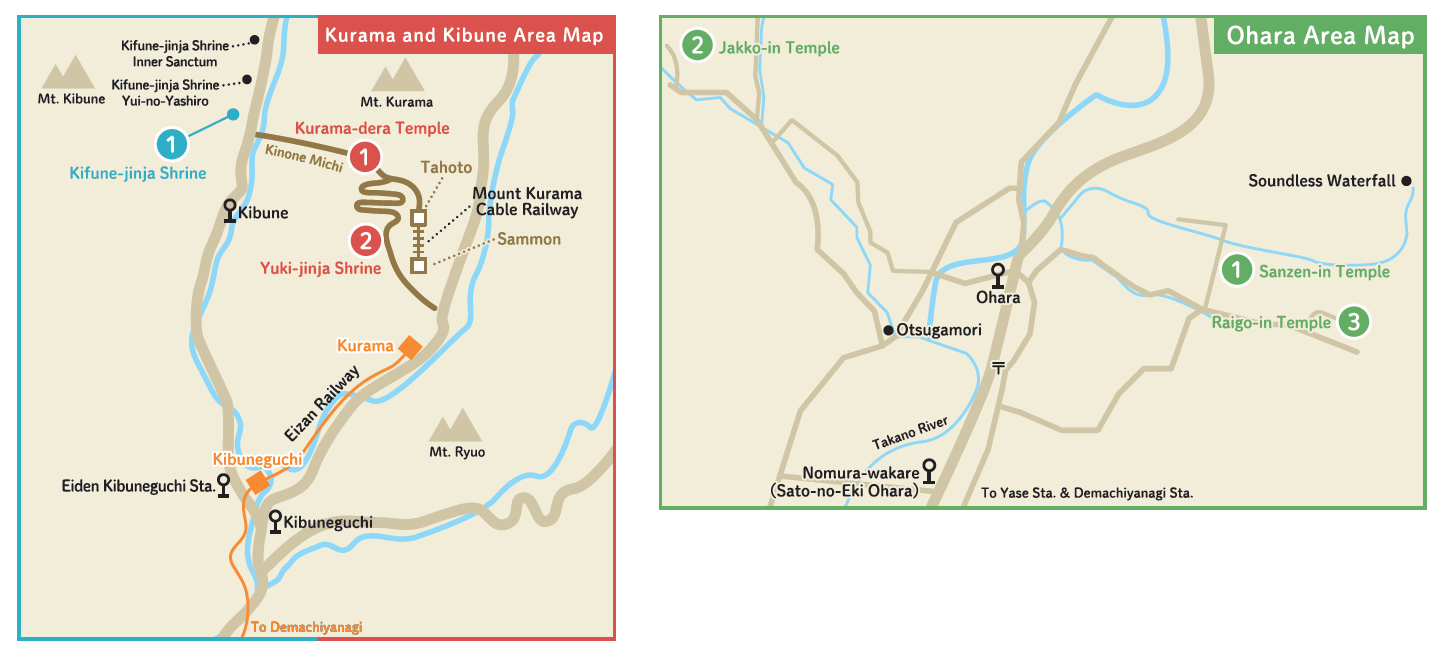
Recommended passes
The information listed here is current as of April 1, 2023
